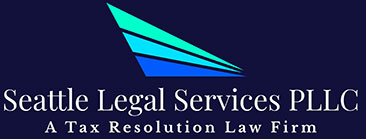How to Request Penalty Abatement With Form 843

If you are requesting relief from certain IRS penalties, you’ll generally need to request that relief formally. Form 843 is one of the most common tax relief forms used to request penalty abatement, but since it doesn’t cover every situation in which you may request relief from penalties, it’s important to make sure it is the right form for your situation first.
This post explains when to use Form 843, how to file this form, and other options for requesting penalty relief. It also outlines when you should contact a tax attorney for help.
An Overview of Form 843
Form 843, Claim for Refund and Request for Abatement, allows you to request a refund of certain taxes or abatement for penalties and interest. There are specific reasons you can use Form 843, as well as a list of exclusions that will require you to use a different form.
Common Uses for Form 843
If you are facing one of these common situations, IRS Form 843 may be the correct form to fill out:
- A refund for any tax besides income, estate, or gift tax
- Refund of overpaid Social Security taxes, Medicare taxes, or RRTA taxes your employer will not refund to you
- A refund for fees
- Abatement of FUTA tax
- A refund or abatement of penalties, interest, and additional taxes
Most people filling out the IRS 843 form do so for the last reason—they are seeking relief from interest, fees, and extra taxes. In this scenario, the IRS requires that your request be for one of the following reasons:
- Fees or interest assessed due to IRS error.
- Penalty or additional taxes occurred due to poor written advice from the IRS.
- First-time penalty abatement.
- Reasonable cause.
The last reason, reasonable cause, is a catch-all statement that allows you to explain why you believe you should be granted penalty abatement.
When Not to Use Form 843
There are also specific scenarios when you should not use Form 843. They include:
- Seeking a refund for overpayment of income taxes.
- Employer’s claim for FICA, RRTA, or income tax withholding.
- Refund of excise taxes for nontaxable use or sale of fuels.
- Overpayment of excise taxes on Forms 11-C, 720, 730, or 2290.
- Situations that can be resolved via an amended tax return.
Alternatives to Form 843
You don’t always have to file Form 843 to request penalty abatement. In some situations, writing directly to the IRS or calling them to request abatement can yield the outcome you’re looking for.
Call the IRS—The IRS does accept some penalty relief requests over the phone, and this may be the best option for you if you are on a time crunch and you need an immediate answer regarding your request. Note, though, that there’s still a good chance that the IRS will deflect your request and tell you to file Form 843.
Write a letter—You may also want to make your request in writing without using Form 843. In this case, you should still include the same information that you would have included in Form 843—why you are requesting abatement or a refund, any payments made that you’d like refunded, the forms related to your request, and any other relevant information.
In many cases, filing Form 843 is the easiest and most straightforward option for taxpayers. If you decide to write a letter, you’ll need to provide the same information that you would have included on Form 843, so most people find it easier to file the form rather than trying to express that information concisely in a letter. But if you’re in a rush, it may be worth requesting relief via a phone call.
Eligibility and Requirements for Abatement
To file Form 843, you must be able to explain why you believe you are owed abatement or a refund. In some cases, this is straightforward; if your employer refused to refund you after they withheld too much in Social Security taxes, that’s fairly cut-and-dry.
But if you are requesting penalty relief due to reasonable cause, you must be able to make a convincing case for why you deserve penalty abatement. Lack of funds, for example, is not reasonable cause for failing to pay; in that scenario, the IRS would expect you to request a payment plan or some other solution versus simply not paying. However, if you have reasonable cause due to a death, a fire, lack of financial records, or computer system issues, that may qualify you for abatement.
If you are requesting abatement for multiple years, you will need to file a separate Form 843 for each year. If you are requesting relief or abatement for a tax year in which you filed jointly with your spouse, they will also need to sign the claim.
Form 843 Deadline
In most cases, you have to file a claim for a credit or refund no later than three years from the date of filing the return or two years from the date of paying the taxes in question—whichever date is later. If you let that window close, you will likely not be entitled to any sort of abatement or relief, even if the IRS would have granted it had you filed it on time.
How to Complete Form 843 and Form 843 Instructions
IRS Form 843 is only one page long, so compared to many other IRS forms, it’s not too overwhelming. You’ll begin by filling out all of your basic identifying information—name, address, SSN, and phone number, and the same information for your spouse if you filed jointly.
The second part of the form relates to the penalties you are requesting abatement for. You’ll mark down the years for which you are requesting relief and the amount you want to be relieved or refunded. The next few questions in this section require you to indicate the type of tax or fee for which you are requesting relief, the section of the IRC code relevant to the penalty in question, and your reason for requesting abatement or a refund. You will also need to mark which type of tax return you initially filed.
For example, if you are requesting penalty relief for a failure to file penalty on a personal income tax return, you will select “income tax” on line three and note “IRC 6651” on line four. IRC 6651 is the part of the tax code that covers penalties for filing or paying late.
On line 5a, you should select IRS errors or delays if applicable, but if you’re applying based on either reasonable cause or for first-time abatement, you should select reasonable cause. Note that if you qualify based on both reasonable cause and first-time abatement, the IRS will generally process the penalty waiver under the first-time abatement rules.
Question 7 is one of the most important parts of this form—it gives you space to provide an explanation of why you believe your request should be granted. The IRS also indicates that you should show how you calculated the amount of relief you are requesting from them. Be concise, but thorough—don’t leave important information out, but don’t clutter your explanation with unnecessary details.
Finally, you just need to sign and date the form. Your spouse will also need to sign and date it.
Important tip: IRS penalties will continue to accrue on your account until you pay in full. To reap the most relief possible, you may not want to apply for penalty relief until you make arrangements to pay your tax debt. That way, you can be sure that the IRS doesn’t continue to add on more penalties after you’ve gotten relief on some of the penalties.
Submitting and Mailing Form 843
The Form 843 mailing address can be fairly complicated, as where you mail the form depends on why you are mailing it. Use the list below to find the correct mailing address.
If you are submitting the form after receiving an IRS notice about a tax or fee related to a specific type of tax, you can send the form to the address given in the notice.
If you are requesting a refund for an estate tax, mail the form to:
Internal Revenue Service
Attn: E&G
Mail Stop 824G
7940 Kentucky Drive
Florence, KY 41042-2915
Filers looking for relief from a prescription drug fee should write Branded Prescription Drug Fee on top of the form and mail it to:
Internal Revenue Service
Mail Stop 4921 BPDF
1973 N. Rulon White Blvd.
Ogden, UT 84201
If you are filing in response to Letter 5067C, write Annual Fee on Health Insurance Providers Final Fee on top of the form and then mail it to:
Internal Revenue Service
Mail Stop 4921 IPF
1973 N. Rulon White Blvd.
Ogden, UT 84201
Filers requesting a net interest rate of zero can send their form to the service center where they filed their latest tax return.
Nonresident aliens requesting a refund of Social Security and Medicare taxes withheld from their pay can send their form to the most recent address listed in Publication 519.
Those requesting relief from a penalty or any other reason can mail their form to the service center where they would send a tax return for the year in question.
When to Talk to a Professional About Requesting Penalty Abatement With Form 843
If you feel overwhelmed or stuck at any point in this process, it may be time to talk to a tax professional. While the 843 form is short and simple, the process of requesting a penalty or refund itself can be complicated, since there are so many forms you can use to request abatement. Since each situation requires a different form, filing the wrong form could lead to unnecessary delays and frustration.
It’s also important to talk to an attorney or other tax professional if you are requesting penalty abatement for reasonable cause. Reasonable cause is a broad term, and if you aren’t able to clarify why the IRS should grant your request, they will likely deny it. A tax professional can help you craft a statement that meets the IRS’s expectations and makes your request for relief stronger.
A successful request for penalty abatement could save you significant money on your tax bill and give you extra room in your budget. The team at Seattle Legal Services can help you navigate your options for relief and move forward with a strategic plan. Call us at 425-428-5262 or contact us online to schedule a consultation with one of our experienced attorneys.
